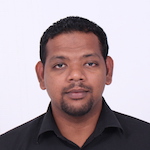Constitutional Reforms Unveiled – An Analysis

The Second Republican Constitution of the Democratic Socialist Republic of Sri Lanka promulgated in 1978 has since had 19 Amendments made to it. As part of the ongoing constitutional reforms process, the Steering Committee of the Constitutional Assembly has prepared a Draft Interim Report covering matters pertaining to the nature of the State, sovereignty, religion, principles in relation to the devolution of power and land, the Central Government legislating on subjects coming under the Provincial List, capital territory, the second chamber, the electoral system, the Executive, the Constitutional Council, and law and order. Below is a critical analysis of and counter-narrative to the proposals to Chapter I and II of the Constitution contained in the Draft Interim Report of the Steering Committee of the Constitutional Assembly.
Chapter I: The People, The State and Sovereignty
Articles 1 and 2
Article 1 of the Constitution defines the Sri Lankan State as being a Free, Sovereign, Independent and Democratic Socialist Republic, while Article 2 deals with its nature, in this case, being one of a unitary character.
The Committee has put forward three alternate formulations for the said Articles. These include – 1) Sri Lanka (Ceylon) is one free, sovereign, independent, undivided and indivisible Republic consisting of the institutions of the Centre and of the Provinces which shall exercise power as laid down in the Constitution, 2) Sri Lanka (Ceylon) is one free, sovereign, independent, undivided and indivisible Republic and 3) Sri Lanka (Ceylon) is a free, sovereign and independent Republic which is ‘undivided and indivisible’/‘an aekiya rajyaya/orumiththa nadu’.
Submitting papers in this regard, MP Dinesh Gunawardena and the Jathika Hela Urumaya (JHU) have called for the retention of the present Articles as is, while an alliance composed of the Sri Lanka Muslim Congress (SLMC), the Tamil Progressive Alliance (TPA), the All Ceylon Makkal Congress (ACMC) and the Eelam People’s Democratic Party (EPDP) have proposed the following – “Sri Lanka shall be known as ‘United Republic of Sri Lanka’. It shall be ‘Sri Lanka Ekshath Janarajaya’ in Sinhala language and ‘Aikkiya Illangai Kudiyarasau’ in Tamil language.” In the JHU’s view, a unitary State was the best model to protect the interests of the minorities.
Further the following has been suggested for consideration to be included within Chapter I. One is that “The Constitution is the supreme law of Sri Lanka.” and the second is that “Any amendment or repeal and replacement of the Constitution shall only be made by the Parliament and the people, in the manner provided for in the Constitution.” Gunawardena has objected to the latter.
The authors propose an amalgam of the wordings in Articles 1 and 2 to be expanded as follows: “Sri Lanka (Ceylon) is one Free, Sovereign, Independent, Unitary, Undivided and Indivisible, Democratic, Socialist, Republic consisting of the institutions of the Centre and of the Provinces which shall exercise power as laid down in the Constitution.” The authors also call for the inclusion of the two additions that have been suggested.
Article 3
On the question of the Sovereignty of the People, Article 3 currently reads, “In the Republic of Sri Lanka sovereignty is in the People and is inalienable. Sovereignty includes the powers of government, fundamental rights and the franchise.”
The Committee with the exception of Gunawardena has proposed that it should be “In Sri Lanka sovereignty is in the People and is inalienable, and includes the powers of government, fundamental rights and the franchise.”
The authors concur with Gunawardena.


